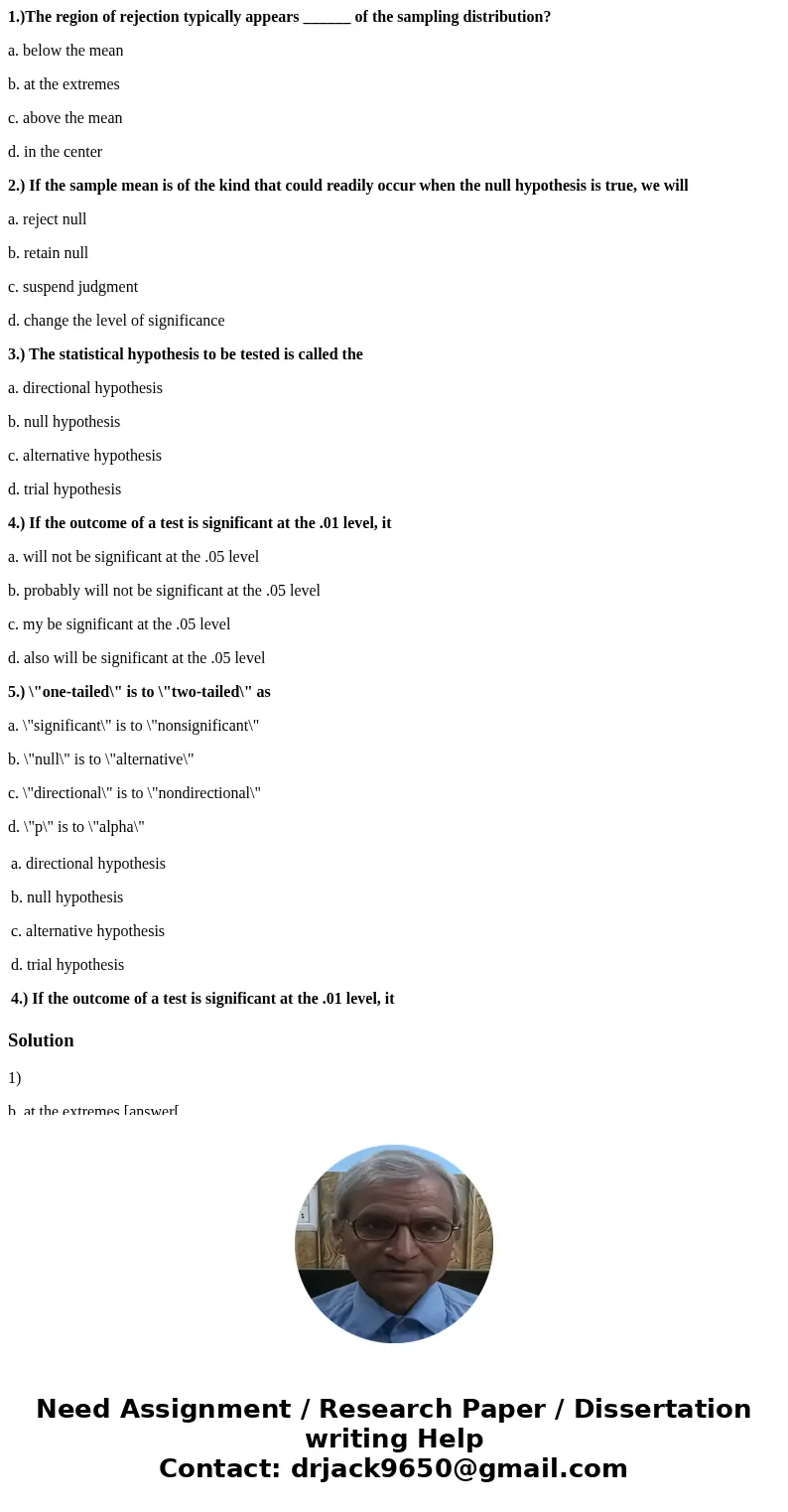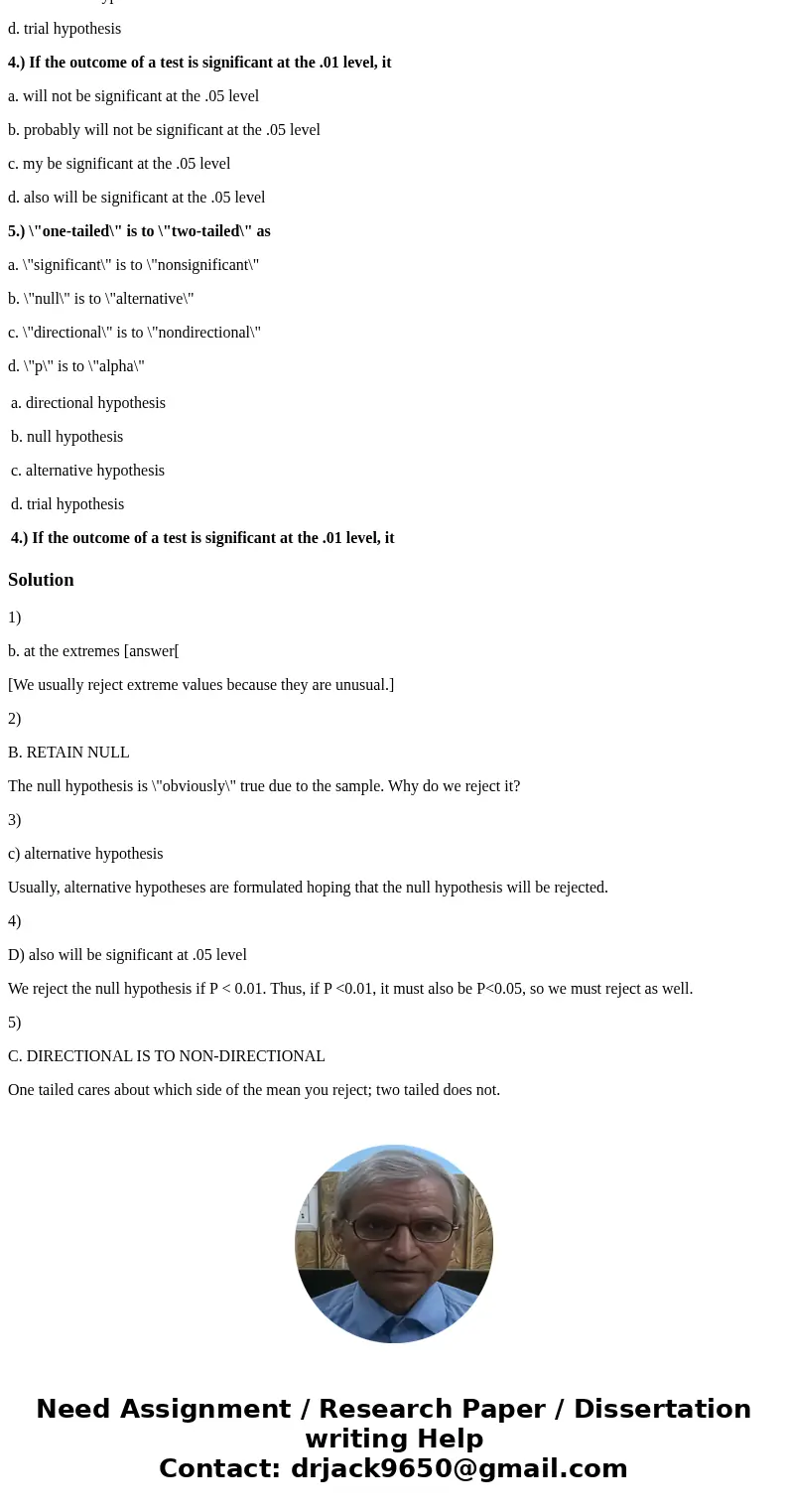1The region of rejection typically appears of the sampling
1.)The region of rejection typically appears ______ of the sampling distribution?
a. below the mean
b. at the extremes
c. above the mean
d. in the center
2.) If the sample mean is of the kind that could readily occur when the null hypothesis is true, we will
a. reject null
b. retain null
c. suspend judgment
d. change the level of significance
3.) The statistical hypothesis to be tested is called the
a. directional hypothesis
b. null hypothesis
c. alternative hypothesis
d. trial hypothesis
4.) If the outcome of a test is significant at the .01 level, it
a. will not be significant at the .05 level
b. probably will not be significant at the .05 level
c. my be significant at the .05 level
d. also will be significant at the .05 level
5.) \"one-tailed\" is to \"two-tailed\" as
a. \"significant\" is to \"nonsignificant\"
b. \"null\" is to \"alternative\"
c. \"directional\" is to \"nondirectional\"
d. \"p\" is to \"alpha\"
| a. directional hypothesis b. null hypothesis c. alternative hypothesis d. trial hypothesis 4.) If the outcome of a test is significant at the .01 level, it |
Solution
1)
b. at the extremes [answer[
[We usually reject extreme values because they are unusual.]
2)
B. RETAIN NULL
The null hypothesis is \"obviously\" true due to the sample. Why do we reject it?
3)
c) alternative hypothesis
Usually, alternative hypotheses are formulated hoping that the null hypothesis will be rejected.
4)
D) also will be significant at .05 level
We reject the null hypothesis if P < 0.01. Thus, if P <0.01, it must also be P<0.05, so we must reject as well.
5)
C. DIRECTIONAL IS TO NON-DIRECTIONAL
One tailed cares about which side of the mean you reject; two tailed does not.


 Homework Sourse
Homework Sourse